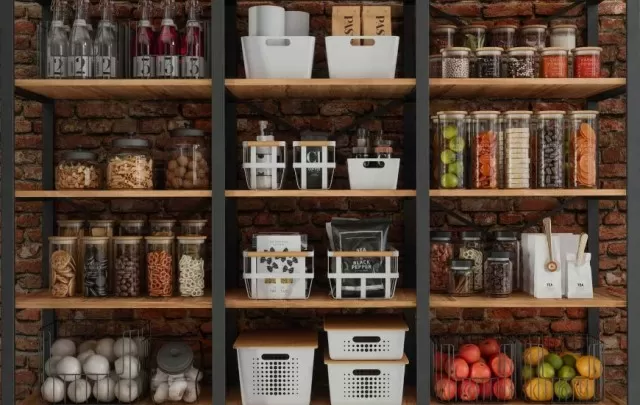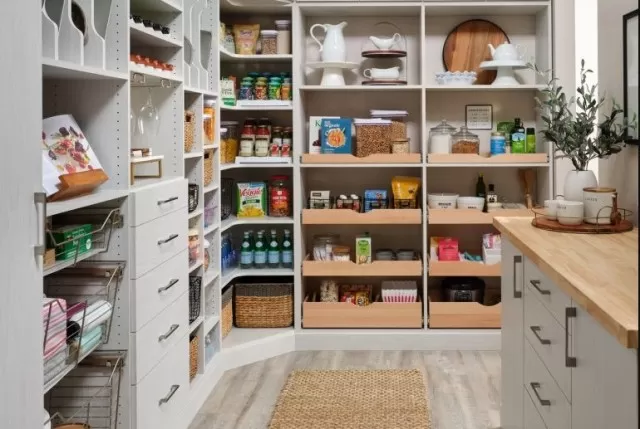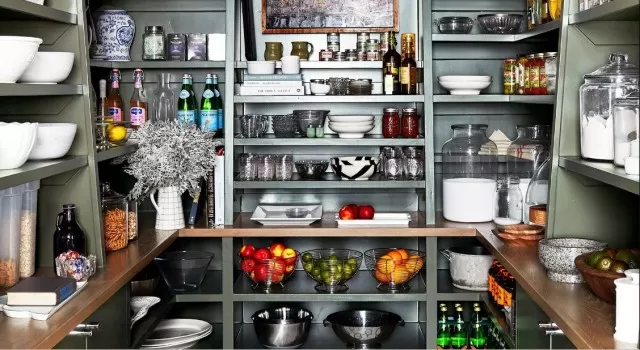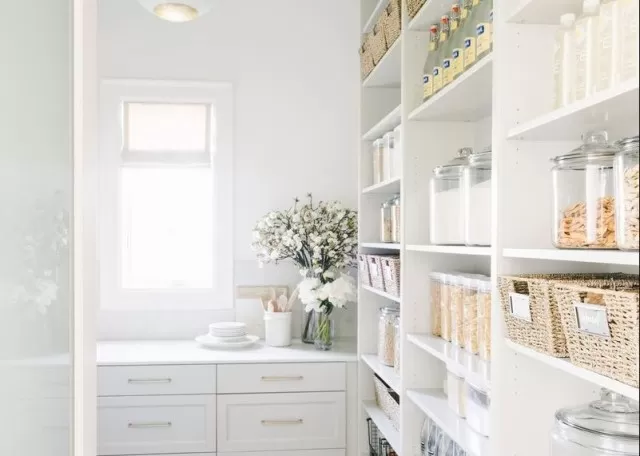Managing a small pantry can be a challenging task due to limited space, inadequate lighting, and the constant search for items by multiple people.
It may seem overwhelming to accommodate everything and maintain order in a small or almost non-existent pantry.
However, there are numerous storage ideas specifically designed for small pantries.
By utilizing DIY projects and creative solutions, it is possible to maximize the available space. To inspire you, we have gathered a collection of small pantry organization ideas that you can implement in your own home.
Ideas to Make Room for a Small Pantry

Utilize Available Space.
When dealing with a small pantry, it’s crucial to make the most of the space you have.
Transform cabinet doors into additional storage by adding shallow shelves on the inside, as long as there’s enough room for the door to close. Use dowel rods to keep small items like spices and condiments in place.
Arrange larger bags and boxes of snacks directly on the shelves. If your pantry lacks adjustable shelving, maximize vertical space by stacking cans and containers whenever possible.
Consider a Track System.
Whether you have a small closet or a blank wall space, a customizable track system can greatly improve pantry organization.
These systems, which can be installed by a professional or as a DIY project, allow for the addition and adjustment of open shelves and pull-out drawers as your needs change. To optimize track shelving in a small pantry, transfer ingredients into food-safe containers and incorporate a Lazy Susan for condiments.
Use risers to organize cans and create more space.

Repurpose a Closet.
Think creatively when it comes to organizing a small pantry.
If needed, consider using a closet in the mudroom, laundry room, hallway, or basement for overflow storage. Store bulk purchases, such as cans and bottles, in this secondary pantry to replenish the main pantry regularly.
Utilize Slim Pantry Solutions.
For tight spaces, a narrow Pull-Out Cabinet can be a game-changer.
You can purchase standalone rolling units that fit in gaps anywhere in the room or install one as part of the cabinetry for a seamless look. Arrange cans of soup, boxes of pasta, and bags of snacks by category on the slim shelves.
When heading to the grocery store, simply slide the cabinet open to take inventory. This allows for clear visibility and easy access while keeping everything hidden when not in use.

Install Pantry Drawers.
Although deep cabinets provide ample storage space for bulky items like pasta and cereal, smaller items like cans and jars can easily get lost.
Avoid food waste and expired items by installing pull-out drawers either instead of shelves or above them. Rolling the drawers out allows you to see the contents without making a mess.
Use Containers.
Decanting non-perishable goods is a smart strategy even in small pantries.
Transfer items like pasta, cereal, rice, lentils, crackers, and chips into airtight canisters to eliminate bulky packaging. Use coordinated bins to organize snacks, including individual grab-and-go items.
You can also sort pantry-friendly produce like potatoes and onions in baskets. This method maximizes space and provides easy visibility and accessibility.

Add Floating Shelves.
If a pull-out pantry doesn’t provide enough storage, consider installing floating shelves nearby.
These shelves can hold everyday items like tea bags or frequently requested snacks for kids. To minimize visual clutter, decant items into matching jars or bins.
Applying this method to the entire pantry can help maximize space by stacking airtight food containers.
Utilize Furniture.
If you’re in a temporary situation or planning a future kitchen renovation, using a standalone cabinet can be an ideal solution.
Find a stylish cabinet with doors that fit your style, space, and storage needs. You can even repurpose and refinish a vintage piece for a personalized and eco-friendly touch.
Within the cabinet, organize your items by category to maintain a well-organized small pantry.
*The information is for reference only.